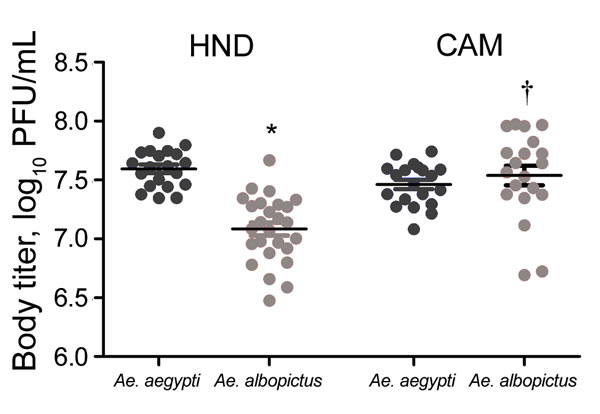Volume 23, Number 7—July 2017
Research
Effects of Zika Virus Strain and Aedes Mosquito Species on Vector Competence
Figure 3

Figure 3. Viral load of Zika virus in Aedes mosquito bodies at day 21 after infection. Zika viral load (PFU equivalents) was determined in whole mosquitoes by using Zika virus–specific quantitative reverse transcription PCR and strain-specific standards. The graph shows titers in individual mosquitoes after feeding on the highest dose (8.6–8.9 log10 PFU/mL). Significant differences (t-test, p<0.05) were identified between mosquito species (*) and virus strains (†). Horizontal lines indicate means ± SD.
Page created: June 19, 2017
Page updated: June 19, 2017
Page reviewed: June 19, 2017
The conclusions, findings, and opinions expressed by authors contributing to this journal do not necessarily reflect the official position of the U.S. Department of Health and Human Services, the Public Health Service, the Centers for Disease Control and Prevention, or the authors' affiliated institutions. Use of trade names is for identification only and does not imply endorsement by any of the groups named above.